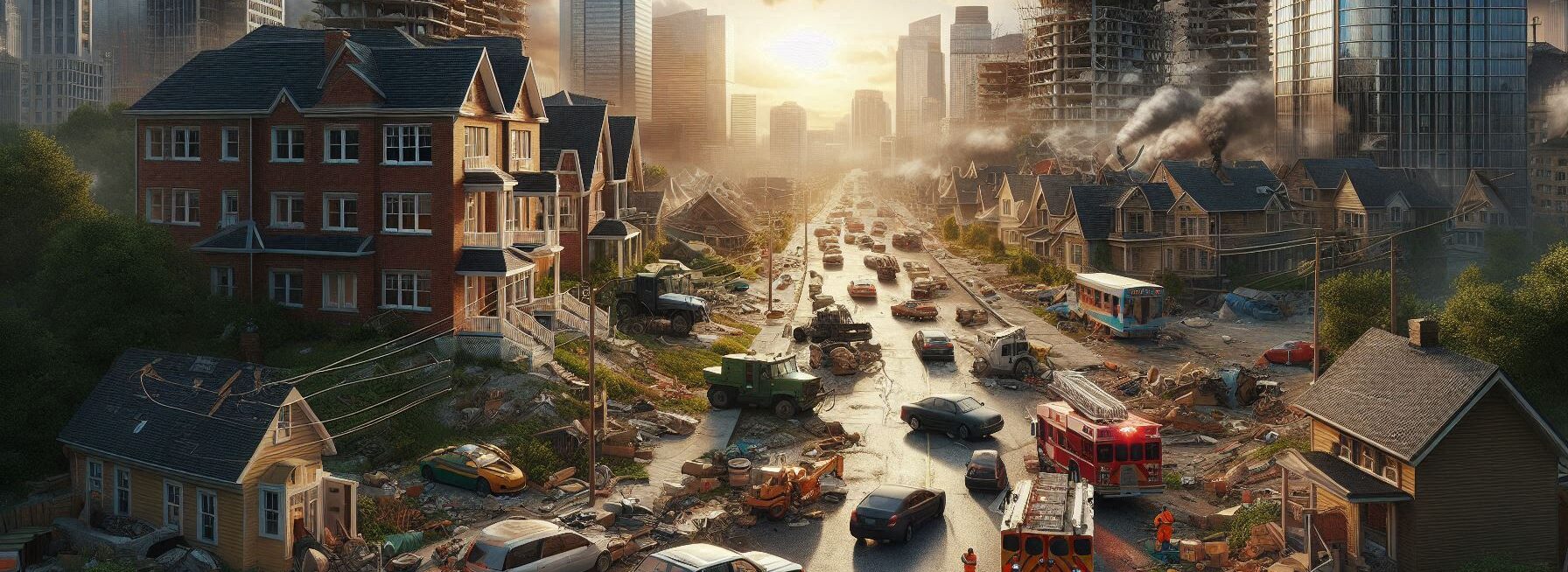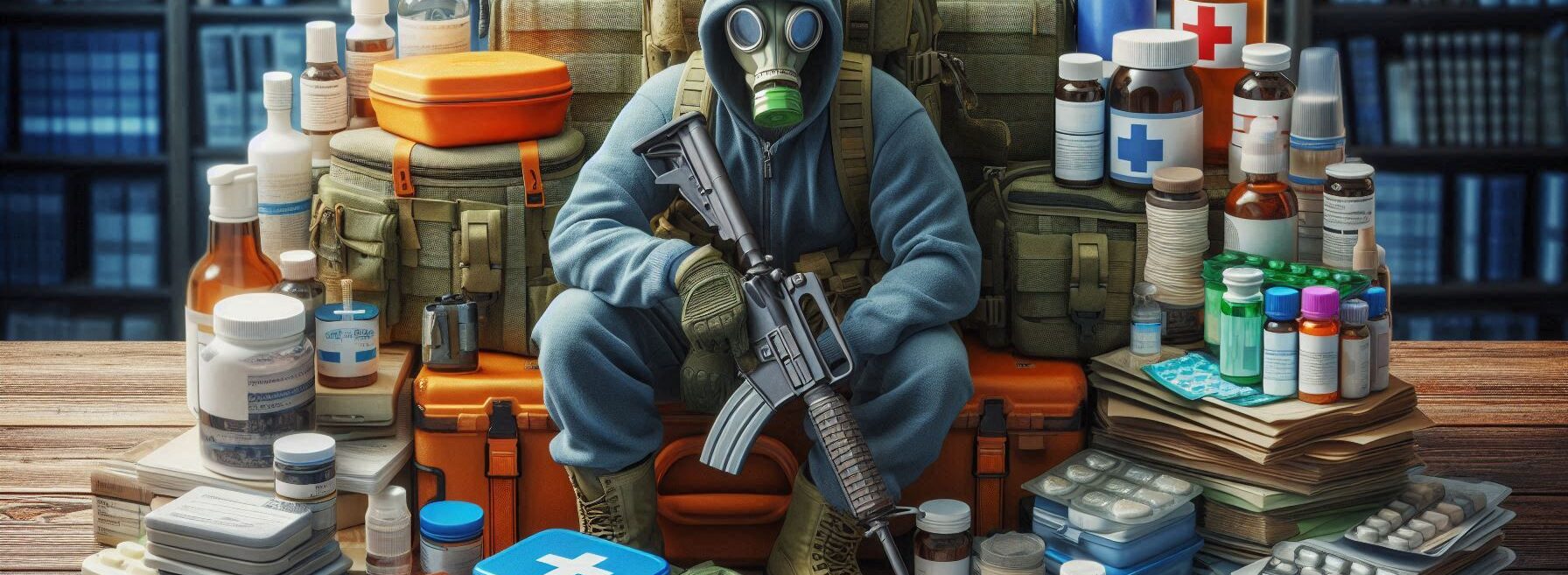Please Note: This post may contain affiliate links. If you click one of them, we may receive a commission at no extra cost to you. As an Amazon Associate, I earn from qualifying purchases.
Last Updated on November 1, 2025 by Kevin Collier
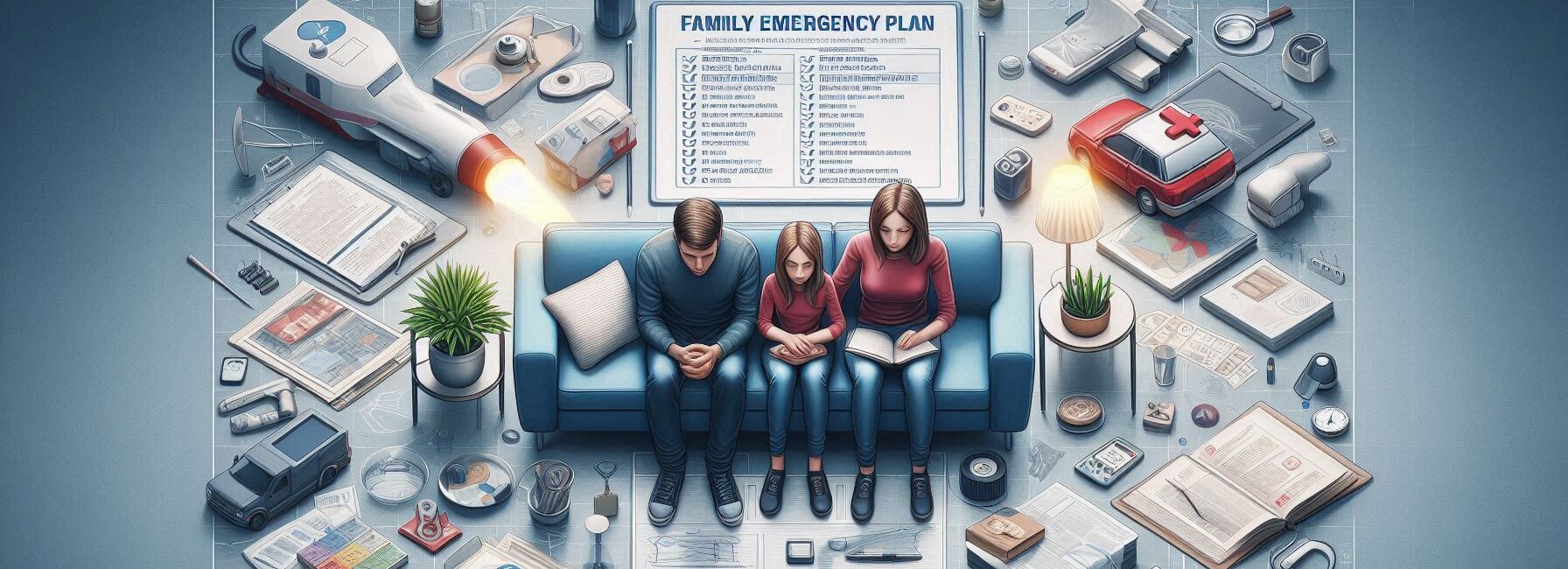
Top Takeaways and Key Concepts
- Hold a Family Meeting: Discuss possible emergencies, assign roles, and keep it fun with snacks.
- Designate Safe Spots: Identify indoor gathering areas and outdoor meeting points for all scenarios.
- Create an Emergency Contact List: Include local numbers and someone outside the area.
- Prepare an Emergency Kit: Pack water, food, first-aid supplies, flashlights, and personal care items.
- Practice Drills Regularly: Rehearse escape routes and emergency tasks at least twice a year.
Imagine it’s a sunny Saturday. You’re munching on your favorite snack, probably something cheesy and crunchy, while the kids run around giggling in the yard.
Then, out of nowhere, the sky goes dark. The wind starts howling like it’s auditioning for a scary movie. Your heart starts racing. “Do we have an emergency plan?” you think. Are we ready, or are we just waiting to see what happens—like a magician who forgot his tricks?
Breathe. You’ve got this. Making a family emergency plan is way easier than putting together IKEA furniture. That stuff can be a puzzle. An emergency plan can be clear and simple.
Start with a family meeting. Snacks help keep it fun. Everyone can share ideas. Talk about what emergencies could happen. Is it storms? Earthquakes? A lost puppy? It’s okay to think about these things. It's better to be ready, right?
Decide on a safe spot in the house where everyone can gather. Maybe it’s the basement or the bathroom—that’s a cozy place! Create a list of important numbers. Write down your family’s cellphone numbers, a neighbor’s number, and emergency services. Stick it on the fridge. Easy to find!
Practice how to get to the safe spot. Run through it once or twice. Make it a game! Kids love that. And don’t forget to talk about what to do if you get separated. Pick a place where everyone can meet. Like a big tree in the park, or a favorite ice cream shop.
Gather your supplies, too. A little kit with water, snacks, and some first-aid stuff. It sounds a bit boring, but trust me, it can make a big difference.
When storms roll in, you’ll feel better knowing you’re prepared. Your family will appreciate it, too. There’s comfort in having a plan. It takes the panic away, and you can focus on what's important—like making sure everyone feels safe.
You can do this. You’re more than ready for whatever comes your way. And hey, once it’s all set, you can go back to enjoying that sunny afternoon snack. With confidence, of course!
*** Shop for Survival Gear - Tools - Kits ***
Survival Gear - Bags and Backpacks - Knives - Boots/Footwear - Communication
Outdoor Cooking - Gloves - Hydration - Dry Boxes - Water Filtration Systems
Tents - Sleeping Bags - First Aid Kits - Multi-Tools - Flashlights - Fire Starters
Navigation - Survival Food - Night Vision - Headlamps - Stun Guns - Binoculars
Understanding What an Emergency Is

Let's start by defining what we mean by “emergency.” It may be anything from natural disasters like tornadoes and floods to man-made problems like running out of munchies during movie night.
By the way, knowing what an emergency is can help us get ready better because no one wants to have to go for answers when things go wrong—trust me!
Get your family together to come up with ideas. Have fun! Get some popcorn and ask everyone what they think is an emergency. You could hear everything from “a bear in our backyard” to “the Wi-Fi going down.”
To be honest, both are real worries depending on where you reside! This practice not only gets everyone involved, but it also makes it clearer when action is needed.
After you've made a list of possible crises, put them in order of how likely and serious they are. If you live in Florida, hurricanes might be at the top of your list, but if you live in Kansas, tornadoes might be at the top.
When you think about it, focusing on local threats will make your preparation go more smoothly.
Talking is Important
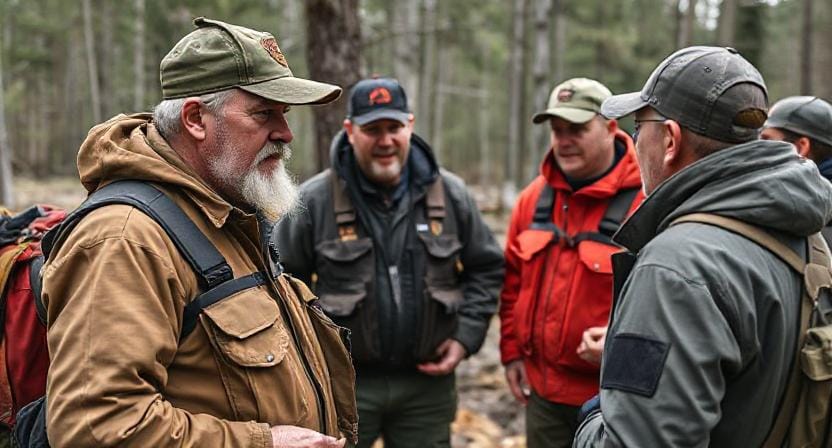
Now that you've thought of some probable catastrophes, let's speak about how to talk to each other. After all, nothing brings a family together like yelling at each other during a crisis! The idea here is to make sure that everyone knows how to get in touch with each other should things go wrong.
First, choose someone who lives outside of town to be your contact. Why are you out of town? If something bad happens nearby (like that bear I mentioned before), phoning someone outside the neighborhood would be more helpful.
Plus, it's a terrific idea; after all, who wouldn't want Aunt Linda to check on them?
Next, make a list of all the phone numbers and addresses for everyone in your family, and maybe even those pals that are always up for an adventure!
Keep copies in a few different places. The door to your fridge is a fantastic place to keep one because you'll notice it every time you go to get leftovers. And by the way, don't forget to text!
In today's world, where mobile coverage can be hard to get during storms or power outages, text messages typically go through when calls don't.
Set Up Meeting Places
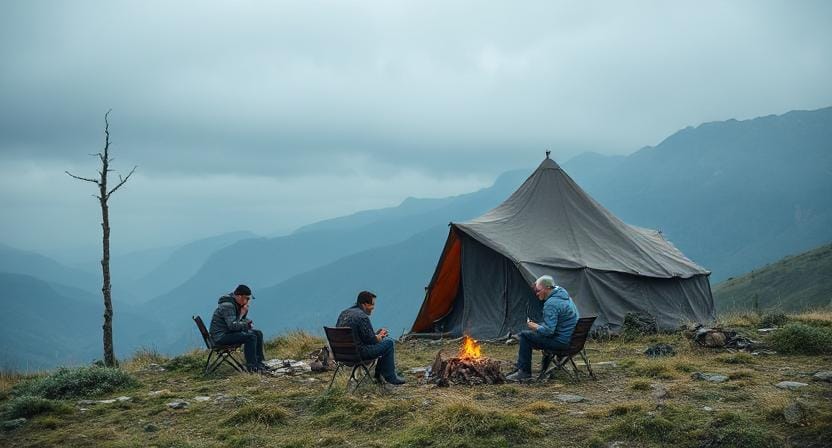
If you and your family get separated during an emergency, you'll want to have specific places where you can all meet up. Don't just pick the tree that's nearest; think about it!
Choose two places: one near your house (like the neighbor's porch or under that big oak tree) and one far away (like Grandma's house).
The point is to be flexible; sometimes you can't escape back home because of bears or barriers (again!). Having a lot of choices makes sure that no one ends up roaming around like tourists who can't find their way at a rest stop.
When choosing these places, don't forget to think about how they can work in different situations. If there are wildfires blazing through neighboring forests or flooding blocking important highways, having clear meeting spots keeps everyone calm even when things are unpredictable.
Get Your Emergency Kit Ready
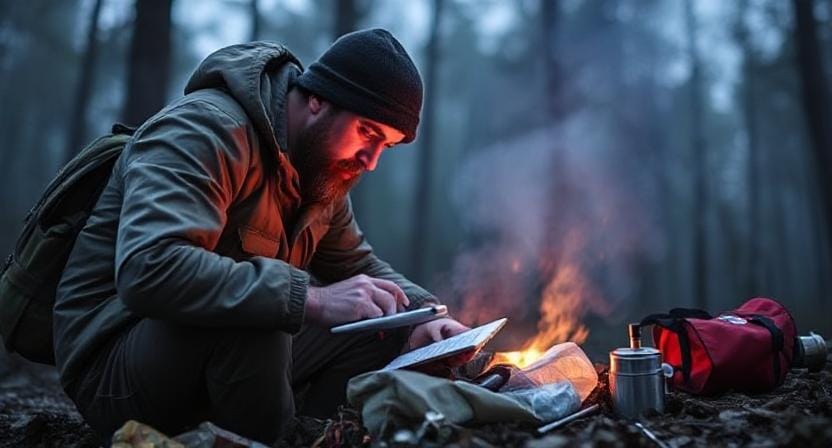
Okay, everyone, this is very important: putting together your family's emergency bag! Think of packing for a camping trip, but instead of marshmallows and s'mores, we're talking about things that will keep everyone safe and comfortable during challenging times.
Begin with the basics: food (non-perishable things work best), water (one gallon per person per day), first-aid supplies (because accidents happen, especially while you're panicking!), flashlights with extra batteries, and a deck of cards is always a good idea! But really, having something fun to do might help you feel better when you're stressed.
Don't forget to bring personal care goods, too. No one wants to deal with irritable youngsters who haven't cleaned their teeth in days while waiting out a storm at Grandma's house.
Once you've put everything together in backpacks or containers labeled “Emergency Kit,” put them somewhere easy to get to but not too obvious so that kids don't get into them before they're required!
Practice Makes Perfect
Now it's time for my favorite part: putting your strategy into action! When calamity comes, the last thing anyone wants is to be confused. So come back together; it's time to have some fun with role-playing!
At least twice a year, have regular drills when everyone practices their allocated tasks in different situations, such evacuating a building during a fire or getting into a car fast if they get a text alert about severe weather warnings ahead.
Make sure that everyone feels free to ask questions during these exercises. It helps them understand and makes learning fun at the same time!
Afterward, talk about the strengths and shortcomings you saw during the drills so that you can all work on them together. This will help you all master this important life skill as a group!
Frequently Asked Questions
Why is holding a family meeting important when making an emergency plan?
A family meeting ensures everyone understands potential hazards, knows their responsibilities, and contributes to planning in a calm environment.
What types of safe spots should be chosen?
Select one indoor location for sheltering and one outdoor location for reunification if the home becomes unsafe or access is blocked.
Who should be included on an emergency contact list?
List all household members, neighbors, emergency services, and at least one out-of-area contact to coordinate information if local communication is limited.
What should be packed inside an emergency kit?
Include water, shelf-stable food, first-aid items, flashlights, medications, hygiene products, and comfort items for children or pets.
How often should families practice emergency drills?
Practice at least twice per year to reinforce roles, become familiar with routes, and improve response time during real emergencies.
Should escape routes be rehearsed in multiple directions?
Yes. Having more than one exit option reduces risk if primary paths are blocked or unsafe.
Where should printed copies of contact lists and plans be stored?
Keep copies in several reliable spots such as on the refrigerator, in backpacks, glove compartments, and near primary exits.
Suggested Resources:
Family Emergency Preparedness Plan
https://www.ready.gov/make-a-plan
How To Build an Emergency Kit
https://www.redcross.org/get-help/how-to-prepare-for-emergencies/survival-kit-supplies.html
Emergency Communication Plans
https://www.fema.gov/emergency-communication-plans

Kevin Collier is a seasoned survivalist and expert in prepping and homesteading, contributing to WiseSurvive.com. With a deep-rooted passion for self-sufficiency and outdoor survival skills, Kevin shares practical advice, strategies, and resources to help individuals prepare for any challenge. His informative articles cover a range of topics, from essential survival techniques to sustainable living practices, empowering readers to thrive in any situation. Whether you're a novice or a seasoned prepper, Kevin's insights will inspire you to take charge of your readiness and build resilience for the future.


